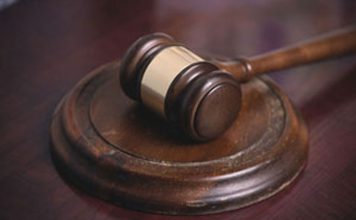As the centennial anniversary of the great 1906 earthquake is
remembered, here is a look at the past and into the future
It’s a scary thing when the earth literally moves under your feet, shaking everything in your world. It’s humbling to think there’s not a thing you can do to stop the doors from swaying, the pictures from falling or windows from rattling.
As we commemorate the centennial anniversary of the great 1906 quake, a magnitude between 7.7 and 7.9 that struck at 5:15am April 18, it’s the perfect opportunity to take stock of our situation and see how well we’re prepared for the next great quake. According to the U.S. Geological Survey, there’s a 62 percent chance of a magnitude 6.7 or higher earthquake striking California in the next 25 years.
People whisper that “the big one” will be 8.0 or higher. Are you ready?
Shaking intensity
Though a few survivors from the 1906 quake are still around, they were only 1 or 2 years old at the time and probably can’t remember much about the event. However, many South Valley residents were here for the Loma Prieta quake in 1989 and vividly remember the violent shaking of that day. To get a better idea of what the 1906 quake must have felt like, compare the shaking intensity on these maps. Loma Prieta was a magnitude 6.9, and the 1906 quake was somewhere between 7.7 and 7.9, making it 30 times more powerful than the 1989 quake.
Earthquake
Disaster Plan
– Know the safest spots in every room of your home and office. Safe places include under sturdy tables and desks, against interior walls, particularly in corners, and in a door frames. During the shaking, cover your head and face from falling objects. Also, hold on to the table you duck under and be prepared to move with the it if the table should shift during the shaking.
– Know the danger spots in every room of your home and office. Stay away from mirrors, windows, hanging objects, fireplaces and tall, unsecured furniture.
– If you are riding Bay Area Rapid Transit (BART), the train will typically stop. Remain calm and follow instructions from BART staff members, who have been trained in earthquake procedures.
– Do not run outside during the shaking or use stairways or elevators. Many people are killed just outside buildings by falling bricks and other debris.
– Conduct practice drills so you and your family know the safe locations in your home and the best escape routes.
– Decide how and where your family will reunite if separated during a quake.
– Choose an out-of-state relative or friend who family members can call after the quake. Often times, long-distance phone lines will work even when local lines do not. This contact can relay information about the whereabouts and condition of the rest of the family.
– Learn how to shut off gas, water and electricity in case the lines are damaged. Never attempt to relight the gas pilot light. Call the utility company.
– If you are driving and an earthquake strikes, move to the shoulder of the highway and away from bridges, overpasses and power lines. Stay in the car and wait for the shaking to stop. Keep emergency supplies in your trunk.
– Find out your city’s disaster plan and your children’s school’s disaster plans so you know what to do should they be implemented. Contact city hall for a copy of the city’s disaster plan.
Sources: www.oes.ca.gov, www.usgs.gov
straight from the source
To get a true sense of what happened the morning of April 18, 1906, we researched the archives of the Gilroy Advocate and Hollister Free Lance. Here are actual excerpts from the original stories.
Hollister Free Lance, April 20, 1906
“In the upper floor, Mr. and Mrs. Griffith had been asleep and were hastily making their way to the street. Just as they reached the sidewalk, the Doctor a little ahead of his wife, the building came down upon their heads. A heavy iron girder fell across the neck of Mrs. Griffith, killing her instantly. The same girder that killed his wife saved the life of the doctor, for it prevented a heavy pile of bricks from crushing him.”
Hollister Free Lance, April 20, 1906
“The handsome Granger’s Union building, erected in 1886 at a cost of $25,000 is a heap of ruins. Wm. Tomlin was standing at his back door when he saw the building apparently rise into the air and collapse with a mighty roar.” … “”Jim Greene was coming out of Lynn’s saloon at the time of the shake, when a falling brick from the Lowe building hit him on the head. He was rendered delirious and was found wandering in a remote part of town by some citizen and given medical attention.”
Gilroy Advocate, April 21, 1906
“Nearly every chimney in town is down, and several of the fire walls are down. Plastering fell in the high school building and in many homes, and one or two of the churches. The heaviest loser is Mr. Thos. Rea, whose brick store buildings are all damaged and rendered unsafe. Dr. Clark’s operating room was a sorry plight, many valuable instruments being ruined. The hospital patients were moved to other quarters. The plate glass windows in McComas & Roth’s and Hecker’s were broken. … Many predicted that the City hall would be flat, but it stood the test admirably, losing only a little of the stone veneer, and some plastering inside.”
Gilroy Advocate, April 21, 1906
“When everything denoted a prosperous year, San Francisco, the metropolis and pride of the West, has been almost wiped off the map by the unseen powers to which we bow our heads in abject fear. … Many former Gilroyans living there have caused untold anxiety in the homes of Gilroy. No word from absent brothers, sisters, sons or daughters, and no way to reach them. Oh! The terrible suspense of it all!”
Gilroy Advocate, April 21, 1906
“Nearly every windmill between Gilroy and San Jose is down. At Rucker and San Martin the schoolhouses are damaged and several residences injured. The Graves home was almost demolished and Mrs. Graves had a narrow escape from death.”














